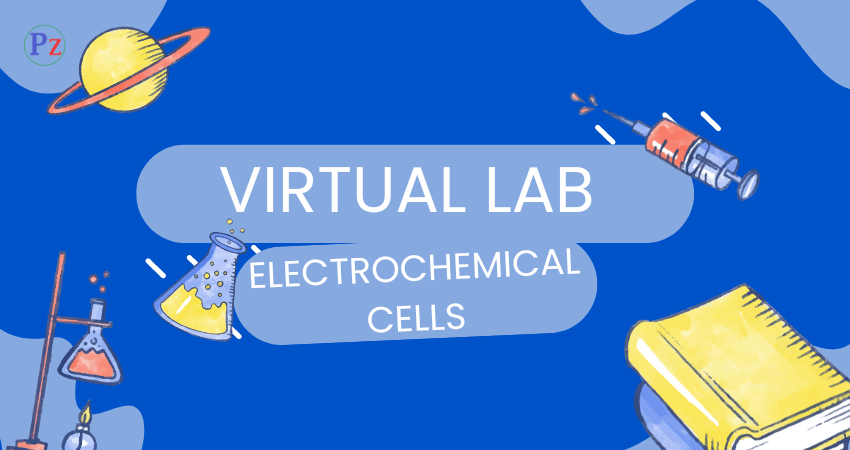The world of education is evolving, and with it, the methods we use to teach complex subjects like chemistry are changing. The traditional lab experience is giving way to innovative digital approaches, and virtual labs are at the forefront of this transformation. When it comes to understanding electrochemical cells—a fundamental topic in chemistry—virtual labs provide a new dimension of learning that was once unimaginable. But why is this shift happening, and what does the future hold for learning Virtual Lab Electrochemical Cells?

Electrochemical cells are devices that convert chemical energy into electrical energy or vice versa. They play a vital role in our daily lives, powering everything from batteries in our smartphones to the massive power grids that run cities. Understanding electrochemical cells is crucial for students studying chemistry, as it lays the groundwork for comprehending how energy conversion and storage systems work.
There are two primary types of electrochemical cells: galvanic (or voltaic) cells and electrolytic cells. Galvanic cells generate electrical energy from spontaneous chemical reactions, while electrolytic cells use electrical energy to drive non-spontaneous reactions. Both types are critical in educational settings to help students grasp fundamental electrochemical principles.
Traditional Learning vs. Virtual Learning in Chemistry
Traditional chemistry labs have long been the standard for teaching concepts like electrochemical cells. However, they come with their own set of challenges—such as the need for expensive equipment, safety concerns, and logistical limitations. Virtual labs, on the other hand, offer a modern approach that addresses these issues, providing a safe, cost-effective, and flexible environment for learning.
The Rise of Virtual Labs: Virtual labs are not a new concept, but their use has surged in recent years due to advancements in technology and the global shift towards online education. These digital labs simulate the real-world laboratory experience, allowing students to conduct experiments in a controlled, virtual environment. This evolution is driven by the need for more accessible, scalable, and interactive learning solutions.
Virtual Labs and Electrochemical Cells: When it comes to studying electrochemical cells, virtual labs offer unique opportunities. They allow students to visualize complex processes at the molecular level, manipulate variables, and observe outcomes without the risks associated with handling hazardous chemicals. Tools like ChemCollective, Labster, and PhET Interactive Simulations are popular platforms that provide immersive virtual lab experiences for electrochemical studies.
Benefits of Virtual Lab Electrochemical Cells for Learning
Safety and Accessibility
One of the most significant advantages of virtual labs is the elimination of safety hazards. Students can experiment with volatile substances and reactions without any physical risk. Additionally, virtual labs are accessible from anywhere, enabling learners from diverse backgrounds to participate without the need for physical lab space.
Cost-Effectiveness and Scalability
Physical labs are expensive to set up and maintain. Virtual labs, however, are far more cost-effective, requiring only a computer and an internet connection. This makes them a scalable solution for educational institutions, allowing more students to benefit from high-quality science education.
Enhanced Visualization and Interactivity
Virtual labs offer enhanced visualization of chemical reactions, making abstract concepts more tangible. Interactive simulations allow students to change parameters and instantly see the effects, deepening their understanding and engagement.
Challenges and Limitations of Virtual Labs
While virtual labs have many benefits, they also come with their own set of challenges. Technical limitations, such as internet accessibility and the need for high-performance hardware, can be barriers. Furthermore, there is an ongoing debate about the importance of hands-on experience that virtual labs cannot entirely replace.
Key Features of an Effective Virtual Lab for Electrochemical Cells
To be effective, a virtual lab must have a user-friendly interface, accurate simulations, and reliable data. These features ensure that students can focus on learning rather than troubleshooting technical issues. An effective virtual lab should mimic real-world scenarios as closely as possible, providing an authentic learning experience.
How Virtual Labs Are Used in Schools and Universities
Many educational institutions have already integrated virtual labs into their curriculum. For example, universities use platforms like Labster to provide students with a hands-on experience in subjects ranging from chemistry to biology. These tools help bridge the gap between theory and practice, enhancing student learning outcomes.
The Role of AI and Machine Learning in Virtual Labs
Artificial Intelligence (AI) and Machine Learning (ML) are revolutionizing virtual labs by offering personalized learning experiences. These technologies can analyze student performance and provide tailored feedback, helping them understand their mistakes and improve.
Future Innovations in Virtual Labs for Electrochemical Cells
The future of virtual labs looks promising with the integration of Virtual Reality (VR) and Augmented Reality (AR). These technologies can provide an even more immersive experience, making learning more engaging. Gamification, which involves using game-like elements in educational content, is also being explored to increase student engagement and motivation.
The Impact of Virtual Labs on Student Outcomes
Research shows that virtual labs can significantly improve student understanding and retention of complex concepts like electrochemical cells. By providing an interactive and engaging learning experience, virtual labs can increase interest in STEM fields, encouraging more students to pursue careers in science and technology.
Teacher and Student Feedback on Virtual Labs
Feedback from both teachers and students has been overwhelmingly positive. Educators appreciate the flexibility and safety of virtual labs, while students enjoy the interactive and engaging learning environment. This feedback is crucial for developers to continuously improve these tools.
Preparing Educators for the Shift to Virtual Labs
For virtual labs to be effective, educators need proper training and resources. Professional development programs and support systems are essential to help teachers integrate virtual labs into their teaching strategies effectively.
| Read More Topics |
| Free 3D models are transforming electrochemical simulations |
| How does a generator produce electrical energy |
| Energy management system in electrical vehicles |





